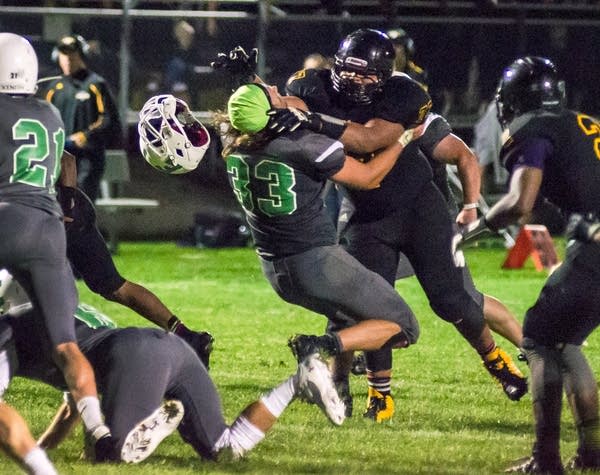Football head injuries: How much can helmets help?

Edina defensive lineman Tanner Sparrow, 33, gets his helmet knocked off by DeLaSalle offensive lineman Keion Tillman, 77, during their game Friday.
Tom Baker / For MPR News
Go Deeper.
Create an account or log in to save stories.
Like this?
Thanks for liking this story! We have added it to a list of your favorite stories.


